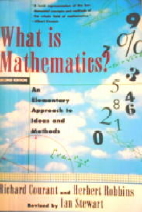I have recently spent some time sorting out the points Arkady Plotnitsky makes about the significance of Riemann’s notion of manifold (or manifoldness) in his paper which appeared in the journal Configurations in 2009. The paper has the title Bernhard Riemann’s Conceptual Mathematics, and the Idea of Space. It is refreshing in that it considers relationships among mathematical, philosophical, and ordinary thought. Plotnitsky explores the idea that there is no single form of thought, and suggests that Riemann’s work is a powerful example of the practice of this plurality in mathematics. This aspect of the paper came to mind today when I looked at two recent publications concerning non-human animal cognition.
The first of these is called Quantification abilities in angelfish: the influence of continuous variables by Luis M. Gomez-Laplaza and Robert Gerlai.
Previous studies with angelfish have demonstrated their capacity to discriminate quantities similar to the abilities found in other vertebrates. But this paper reports on studies that were done to correct the failure of earlier studies to control for the non-numerical features of the schools of fish (referred to as shoals) to which these angelfish respond (such as the density of the school, the interfish distance, and the overall space the shoal may occupy). In their concluding discussion they continue to qualify the studies’ findings:
As previously alluded to, the present results on the use of continuous variables for the discrimination of large and small quantities should be considered with caution for two main reasons. One, there are many visual features of a shoal that fish could potentially use to discriminate between shoals without having to rely on numerical information, and not all of these features were controlled in the current study. For example, fish could perceive such quantitative properties as surface area, contour length, amount (intensity) of light reflected, or total amount of movement in the shoals rather than relying on a strict form of numerical competence… it is possible that unlike experimenters, fish may not make dichotomous decisions and may use different types of information in a graded manner. That is, depending on the size of the shoals contrasted and depending on the availability of the different numerical and non-numerical types of information, the experimental subject may use one or the other feature(s) with differing weights. Clearly, understanding this complexity will require further research in which most, if not all, possible factors are systematically varied one by one and also in combination with each other. (emphasis my own)
With my mood set by reading about Riemann, those quantitative properties – like surface area, contour length, intensity of reflected light, and total amount of movement – called to mind Riemann’s careful thoughts about magnitude, and many of Plotnitsky’s points about the conceptual nature of Riemann’s mathematics. These properties are things perceived. I’m working on my own paper to suggest that Riemann’s insights could be viewed as insights into cognition itself.
The fish paper’s references led me to a paper by Zhanna Reznikova and Boris Ryabko published last year called Numerical competence in animals, with an insight from ants which can be found on Reznikova’s website under publications. Here, again, the emphasis is on language independent mental magnitudes. The paper surveys studies done on monkeys, pigeons, parrots, crows, dolphins, bees, beetles, fish, dogs, and human infants.
Advanced numerical abilities—exact counting and arithmetic operations— have been considered for a long time to be uniquely human and based on our language symbolic representation. Recent studies provide intermediary links between numerical abilities in human and non-human animals.
But the authors of this paper draw attention to a distinguishing feature in these studies: “all known experimental paradigms for studying numerical competence in animals do not exploit the phenomenon of close relations between intelligence, sociality and natural communication.” They look then to studies with ants. Ants were seen to communicate some kind of numerical information about the location of food.
In the described experiments scouting ants actively manipulated with quantities, as they had to transfer to foragers in a laboratory nest the information about which branch of a ‘counting maze’ they had to go to in order to obtain syrup…
The likely explanation of the results concerning ants’ ability to find the ‘right’ branch is that they can evaluate the number of the branch in the sequence of branches in the maze and transmit this information to each other. Presumably, a scout could pass messages not about the number of the branch but about the distance to it or about the number of steps and so on. What is important is that even if ants operate with distance or with the number of steps, this shows that they are able to use quantitative values and pass on exact information about them.
I’m struck by the potential here. This emphasis, in animal cognition studies, to look within the animal’s physical and social structures for a different kind of quantitative awareness, could contribute to how we understand our own sense of magnitude and quantity, which is now objectified in mathematics.


[…] Riemann, angelfish and ants […]